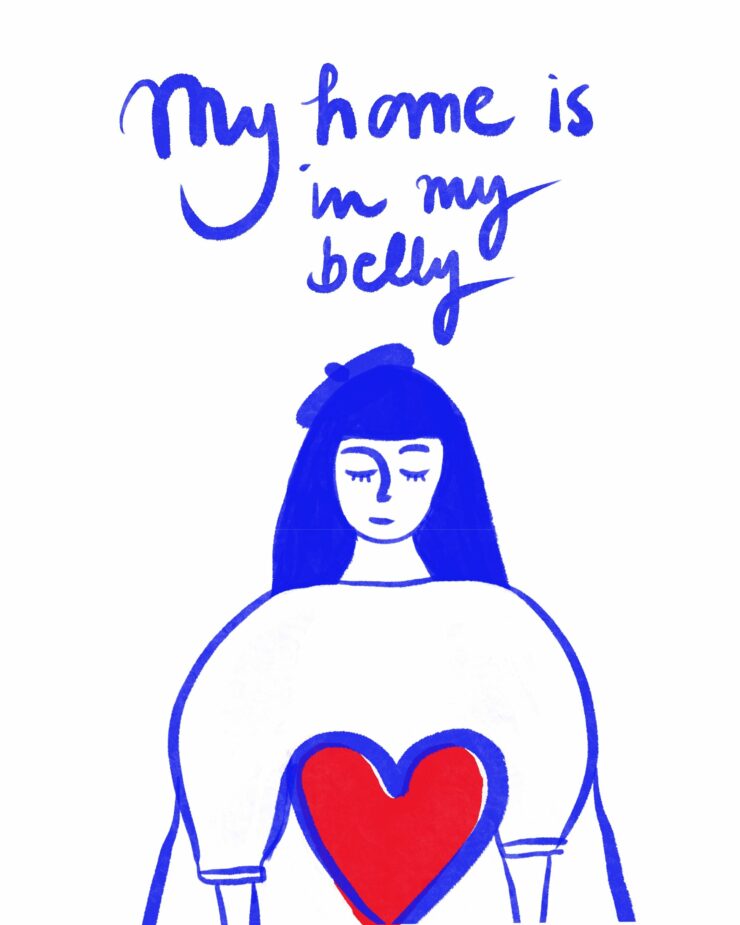Last month lilithmag.nl published, “My home is in my belly,” a visual story about migration, belonging, hunger, and the heart. The Religious Matters team discussed the piece, which resonates with our themes “food” and “body,” with maker Sara Emami, a UX designer for Philips based in Amsterdam. Sara was born in Tehran in 1984 and grew up in the Netherlands after her parents fled the Islamic Republic. In her contributions to Lilith, she draws and writes about not entirely fitting in, being different, from the perspective of individuals’ feelings.

In “My home is in my belly,” she recounts the words of her blind grandfather, Ismail Rahimian, “our eyes are far apart but our hearts are always close to each other.” Sara used this memory to visualize the hunger that migrants, refugees, and their children experience daily, for family and belonging. To describe her belly ache and bittersweet nostalgia, she translated her grandfather’s use of the Persian word “dil,” meaning stomach as well as heart. “Dil,” Sara explains, “describes many types of emotions, but also thoughts and memories.” By invoking her grandfather’s use of the word, her story echoed Sufi poetry in which the heart-stomach gives access to an inner seeing, while simultaneously connecting with the context of the Netherlands as an immigration nation of the modern world.
More about the various uses of the Persian word “dil” can be read in: Sharifian, Farzad. 2008. Conceptualizations of del ‘heart-stomach’ in Persian. In: Farzad Sharifian, Rene Dirven, Ning Yu, Susanna Niemeier, eds. Culture, Body and Language: Conceptualizations of Heart and Other Internal Body Organs Across Languages and Cultures. Berlin and New York: De Gruyter Mouton, 247-265.

